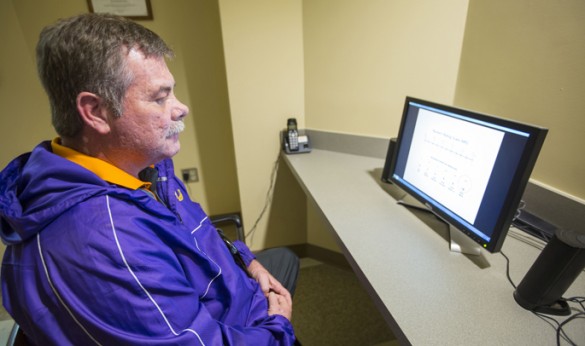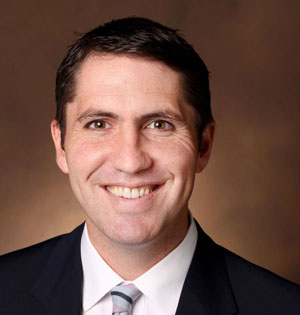
Randal Fowler left Vanderbilt University Medical Center 19 years ago with a brand new heart, so he’s accustomed to following doctors’ orders to a T, but when he recently checked in for hip replacement surgery he learned something new.
“I didn’t realize with something like a hip surgery that you really needed to be thinking about your lungs, too — keeping your lungs clear and not letting pneumonia set in,” he said.
Fowler learned this when he watched a three-minute video shown to patients before surgery at the Vanderbilt Preoperative Evaluation Center (VPEC). The video can also be viewed in patient rooms following surgery. The Section of Surgical Sciences created the video with input from groups at VUMC involved in perioperative care. It includes information on things patients can do to improve recovery, such as getting out of bed as soon as safely possible and even brushing their teeth daily (this prevents the spread of germs to the lungs).
When a patient learns they need surgery, there’s a lot of information to process quickly — when and where to be, what not to eat and drink, what medicines to stop taking, and the list of to-dos seems endless. This can be overwhelming, even on a good day. The video is part of an effort to better educate patients from the moment they learn they need a procedure to after they return home.
“In the past we gave too much information, and a lot of the information was not critical to a desired outcome,” said Lane Stiles, director of the Department of Patient Education. “We want the messages to be very clear, concise and consistent. We realized patients were having trouble navigating the process. People are stressed, so the more we can focus on key messages, the better experience our patients are going to have, and the better they can do the things they need to do.”
VPEC staff created a printed booklet to demystify pre-surgical instructions several years ago, but it was more than 10 pages long, and because of many changes at the Medical Center, a lot of information it included had become outdated.
“Instead of scribbling all over it making corrections, we wanted to refine and update things,” said Urology Clinical Manager Russ Kunic, MSN. “We got feedback from patients and a ton of staff feedback, and we used that to guide the development of a new booklet.”
A team of physicians, nurses, surgery schedulers and other staff members put their thoughts together to create a streamlined booklet to give patients pre-procedure information. The four-page booklet, designed by media services specialist Deborah Doyle and printed by Vanderbilt Printing Services, has been piloted in the Urology Clinic for three months. Now, after positive feedback from both patients and staff, it’s ready to be introduced at the 13 outpatient surgical clinics that are part of the surgical patient care center.
“We can also open this up to other clinics outside of the surgical PCC,” said Seth Smith, VUMC clinical business coordinator. “Orthopaedics caught wind of this project before it was finished, and they’ve reached out for this material so they can modify it for their specific needs. This is one of the benefits of how this has been designed. Each clinic can have ownership in what they need to say, as long as it’s delivered within this template.”
“I am pleased that we are able to roll out this new informational packet for patients who are scheduled for an operative procedure at VUMC,” said R. Daniel Beauchamp, M.D., chair of the Section of Surgical Sciences.
“This new patient-friendly tool is versatile and is applicable to all areas scheduling patients for a surgical procedure. It provides easily understood information that takes the guesswork out of where the patient is to be and when to be there.
“It also provides information regarding what will be needed from the patient before, during and after their procedure, what to expect from their health care team and whom to contact for more information. I want to express my sincere thanks on behalf of the VUMC physicians and nurses to those who created this helpful tool,” said Beauchamp, the John Clinton Foshee Distinguished Professor of Surgery.















